Do you want to become a professional blogger?
Don’t miss these up-to-date tips to not waste money or time.
For example, did you know SEO is no longer a thing? You don’t even have to know what it means to start a successful website anymore.
Nonetheless, let’s jump into it!
1. Focus on Producing a Ton of Content
The most important thing when starting a blog is to produce a lot of new content.
Do not focus on anything else in the beginning.
Preferably you should produce 1–2 long-form blog posts, usually with 1000+ words, every day.
Yes, this can take anywhere between 3 hours to 8 hours a day.
And as a beginner, that’s by no means easy. It requires a ton of patience.
The worst part is that when it comes to search engines, the growth is slow at first. This means that not only will you work hard but also see no results at first.
Look at the growth of this example site of mine:
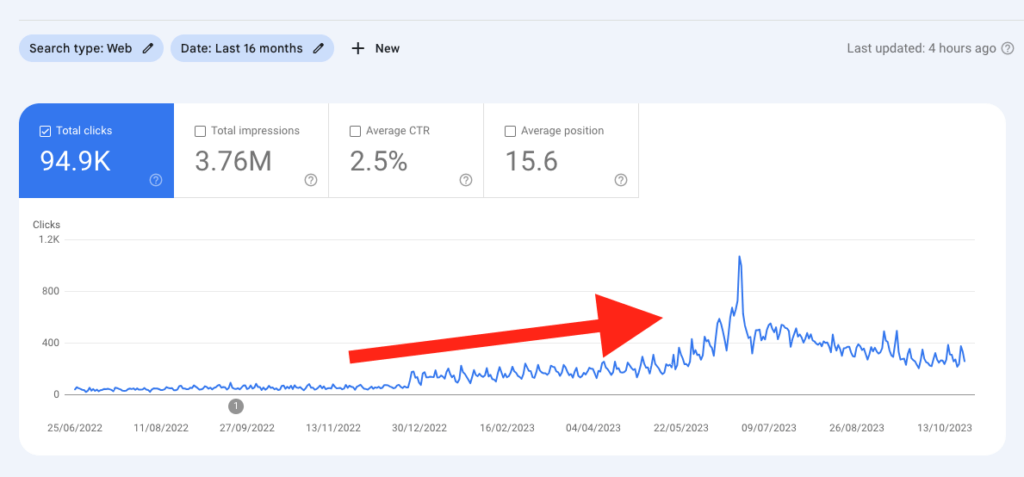
As you can see, it took more than a year to get to 400-500 views per day.
This site now earns about $1,500/month. It has 400 blog posts.
Of course, the site is growing and it will earn a lot more than $1,500.
But this is what it takes.
Be prepared. Don’t give up. Don’t leave your job. Just work super hard!
Even if you work for 6 months every day and see no results, that’s not a problem. You’re investing in your future but the fruit of the labor isn’t just flourishing yet.
Don’t give up too early. It takes a long time to find success with a blog.
2. Write about “In-Demand” Topics
Keyword research means trying to learn what people type into a search engine. It’s the only way to avoid writing content no one is searching for.
Thus it is important you do keyword research before writing a single piece of content.
These days, personal blogs are no longer thriving. Instead of reading blogs like 10-15 years ago, these days people watch social media platforms. Thus, writing about random topics won’t work anymore.

The only way to get traffic to your blog is by answering questions people type on Google.
There are many ways to validate/research keywords.
For example, you can check if Google Search suggests your keyword or keyphrase when you start typing it.
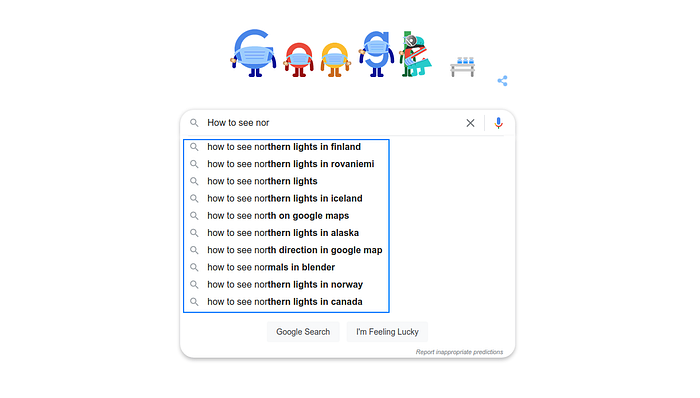
You can also use Google Trends to see how a keyphrase is performing over time.
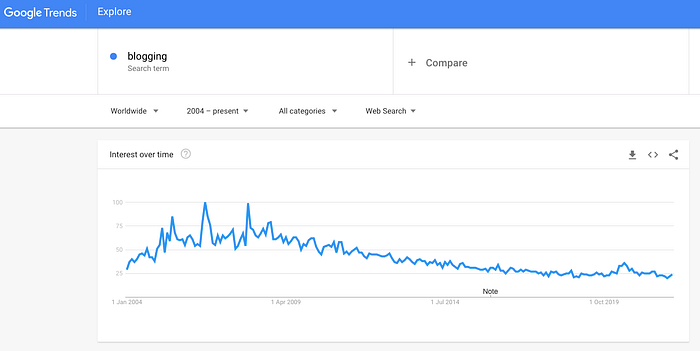
Then you can also perform a simple Google search to get an idea of how many other articles are there on the topic.
For example, to see how many titles have the words “blogging tutorial 2022”, search forallintitle: blogging tutorial 2022

Analyze the quality of the content for the search results.
The goal is to write better articles than any of the top-ranking pages to out-rank them.
This is one of the most valuable blogging tips ever. To become the best, you need to beat the best.
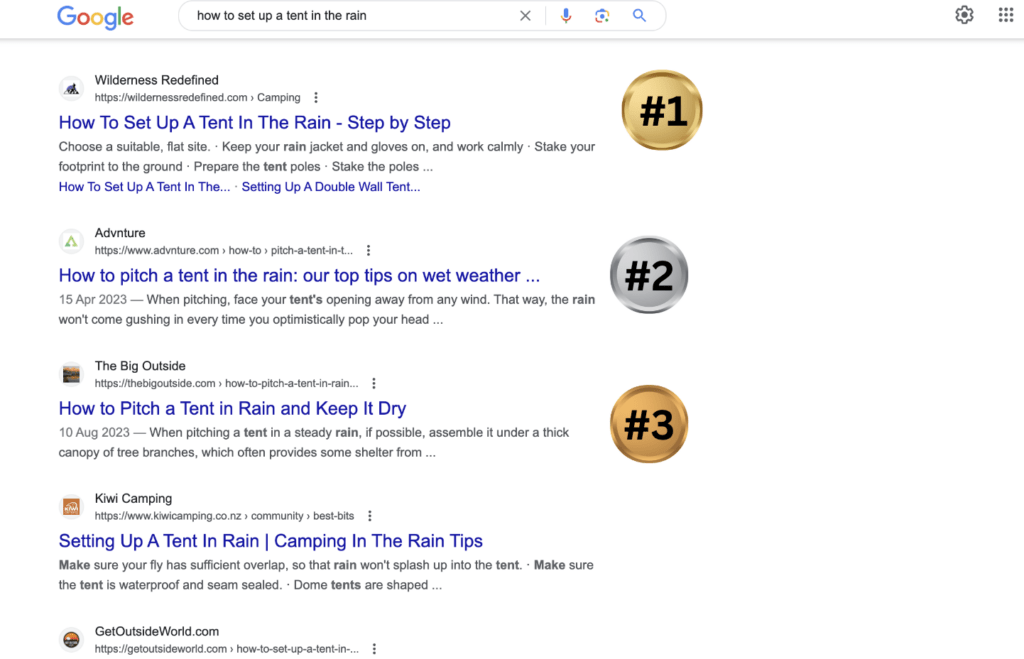
Why would Google rank a page or post that’s the second-best answer?
So before you write, make sure to nail these two:
- Write about a topic that’s something people search for.
- Make sure to know what’s the level of quality so that you know how good a post you need to write.
This is something you should always do before writing a blog post.
3. Match the Search Intent
Every Google search has an intent.
The number one Google search result is a page that Google thinks matches the search intent the best.
Let’s say someone types “How to see northern lights” on Google.
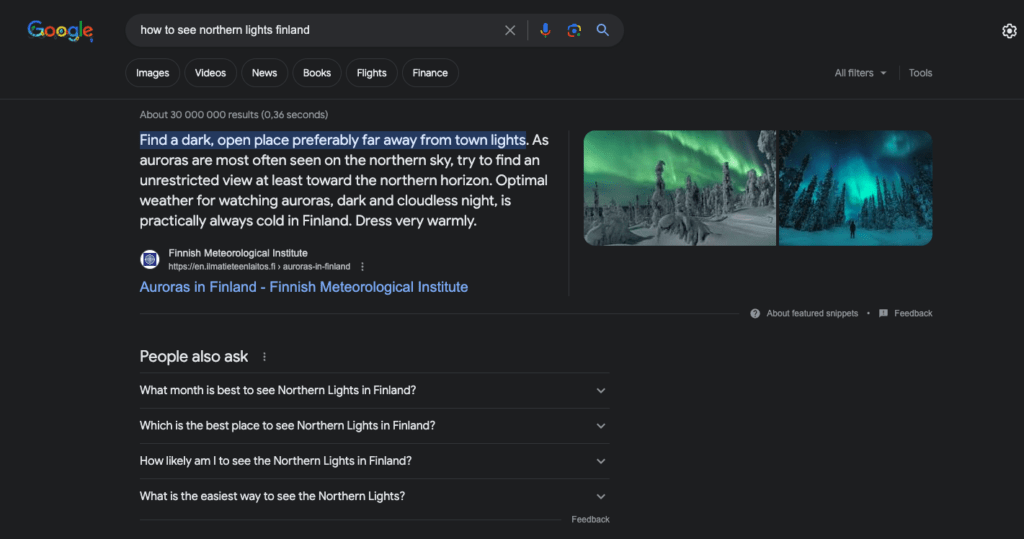
A low-quality blog post briefly explains “Visit Lapland and look at the night sky when there are no clouds”.
However, this is something that the searcher probably already knew.
To match the search intent, your blog post has to bring in every piece of information that could be useful for the user, which in this case is someone chasing the northern lights.
A high-quality blog post around that topic would cover at least the following aspects:
- What time of the year do northern lights occur?
- At what time of the day do northern lights occur?
- How likely are northern lights?
- Northern light forecasting sites
- Weather forecasting sites
- Characteristics of an ideal spot to see Northern lights
- How to prepare for the freezing weather?
- Northern light camping sites?
This kind of blog post is a complete guide that covers EVERYTHING about northern lights. It’s an epic guide that anybody searching for that topic might find useful.
This is the type of content that thrives these days.
4. Don’t Focus on Useless SEO Advice
This is one of the most important takeaways these days: SEO (search engine optimization) is no longer a thing.
Those traditional keyword and backlink strategies simply don’t work anymore.
If you hear these terms for the first time, good! Don’t pay any attention to these. You don’t need to know what SEO means to become a successful blogger anymore.
That was not the case back in the day. But these days, Google takes care of ranking your content. You don’t need to do any tricks or hacks to get to the top of the search results.
Google ranks best posts and is getting better and better at it all the time.
Many SEO experts suggest using expensive SEO tools, spending hundreds of hours building backlinks by outreach, and much more.
However, this is useless. I’ve never used SEO to build blogs. All I do is focus on writing quality content for people in my niche.
5. Find Topics from Google
The best way to find relevant topics to write about is by using Google’s own data.
However, Google does not make this data publicly available.
But, there is a trick you can use. If you open up Google in Incognito mode, you are going to get unbiased search suggestions.

If you hit search on the first suggestion and scroll down the page, you are going to see even more suggestions.
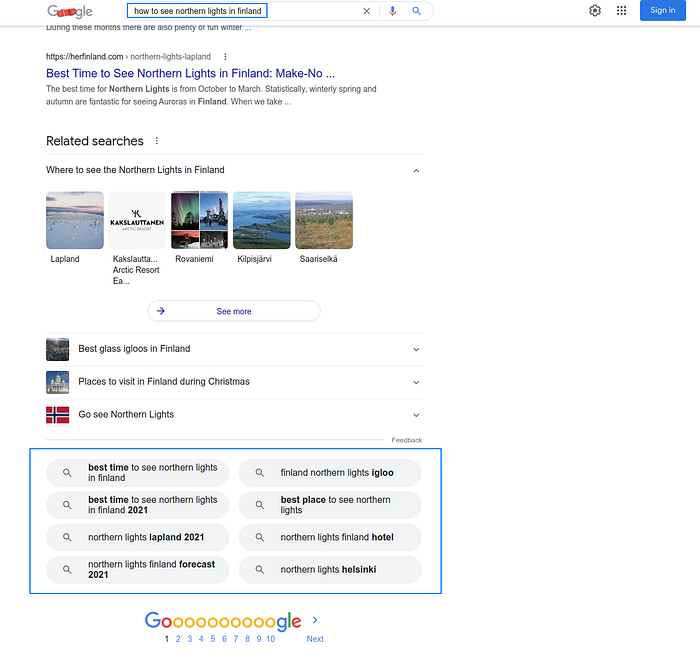
Both of these sections show you topics that Google thinks you want to see.
Google makes these suggestions based on what people have searched in the past.
These suggestions are really great blog post candidates backed up by Google.
This way, you can find all the blog posts you ever need to write in your niche.
Just make sure these make sense. Don’t try to do exact matches with these keywords and use common sense.
💡Sometimes Google suggestions and related searches are good blog post subtopics as well!
7. Write to an 8th Grader
Keep it simple and readable. Do not try to outsmart your readers.
A good blog post should be clear enough for a child to understand.
Look at this example. If you’re looking for information in a hurry, would you like to read something like this?
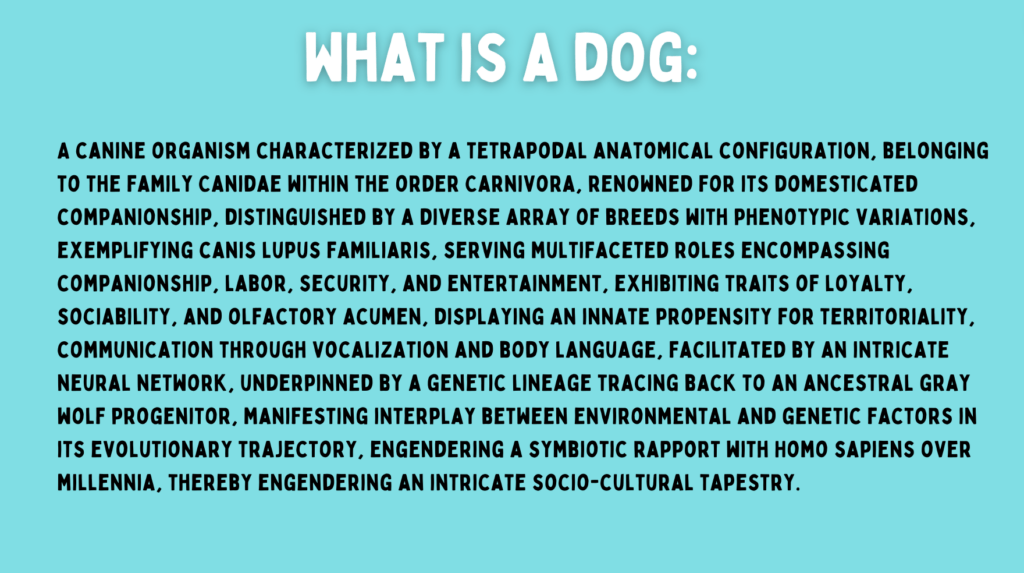
Or would this version make more sense?
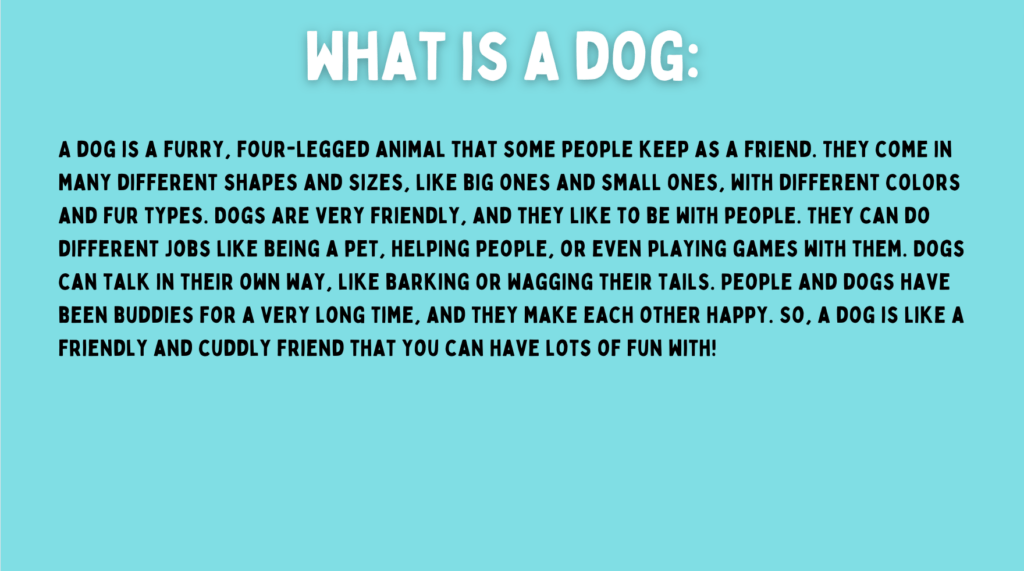
Do not drive your visitors away by using cryptic language. This will only drive traffic away. The easier you make it for your audience to read and understand, the better.
If your visitors have hard time understanding your content, there’s a flaw in your content creation system.
7. Always Add to the Web
Don’t write a post with the same information as all the other articles on the Internet.
This is especially useful to know these days when people use AI to write blog posts.
Google does not show your article on the #1 page if the content has already been covered on multiple occasions.
Imagine yourself being the search engine.
If there’s a great entry for “What is a cat”, what would you do if someone submitted another page about “What is a cat”.
The post just repeats the original resource—in different words and order.
Would you add that new post to replace the old one?
Or would you ignore that post and save yourself from the hassle?
Exactly! You’d ignore the new one. If it ain’t broke, don’t fix it.
This goes with search engines. If a blog post or web page just repeats what’s already there, it’s never going to rank.
And by the way, this is exactly what’s the issue with AI-written content. It just repeats. It never adds.
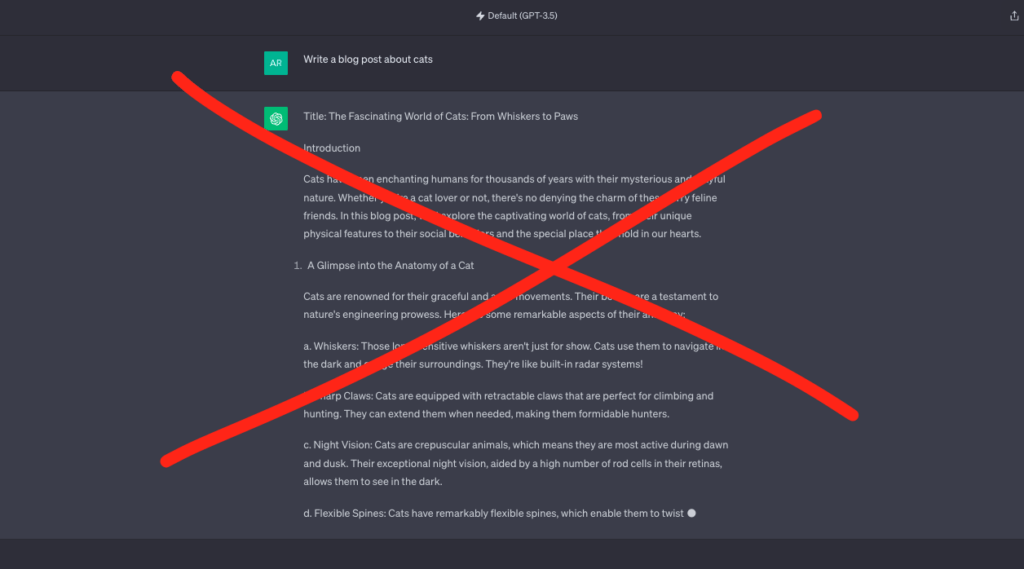
Always add something new and useful to the conversation. Do not just copy others.
This could mean images, research results, videos, alternative approaches, or anything that makes your blog post stand out.
By the way, make those images unique. Use images you’ve taken or illustrated. And make them add value to the context. Don’t just use images for the sake of using images.
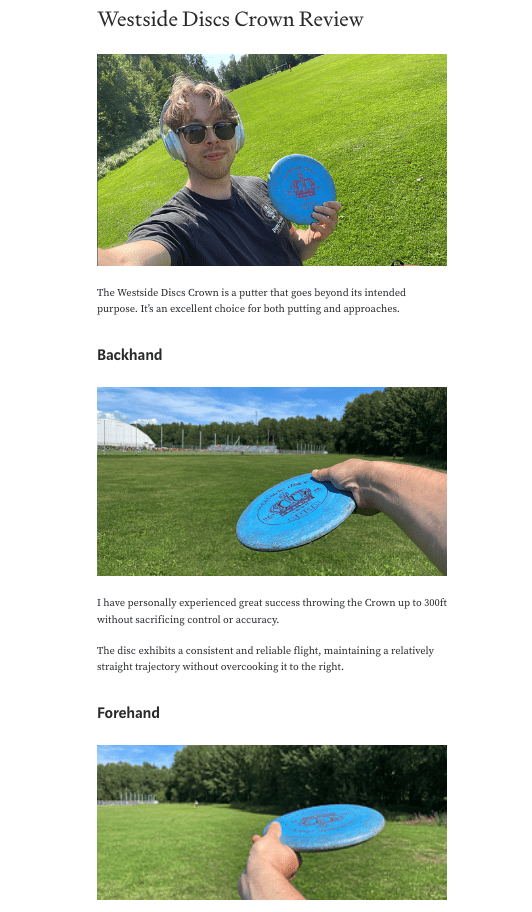
Be unique and always add to the web!
8. Use the Skyscraper Strategy
To rank #1 on Google, you need to write the best piece on that topic.
This is where the skyscraper strategy checks in. The idea of the skyscraper technique is if a competitor builds a 10-meter building, you need to build a 100-meter one.
This applies to blogging and search results.
When you write an article about a topic, make sure it is 10 times better than any of the top-ranking articles.
Otherwise, your chances of ranking high are slim to none.
One thing to keep in mind, though. There’s never a guarantee to rank on Google.
But if you write the best post, your chances are maximized.
9. Produce Long-Form Content
Google prefers long-form content.
Depending on the topic you search for, you might find up to 10,000-word blog posts in the top 10.
Google loves long content. This is because those take time to produce, they’re informative, detailed, and overall useful guides.
One counterargument to long-form content is that busy people don’t want to spend 20 minutes looking for an answer.
But here’s the thing. A successful blog post is always accessible to everyone. Make it for both busy and not-so-busy readers.
Add a brief 100-200 word key takeaway right at the beginning of the post.
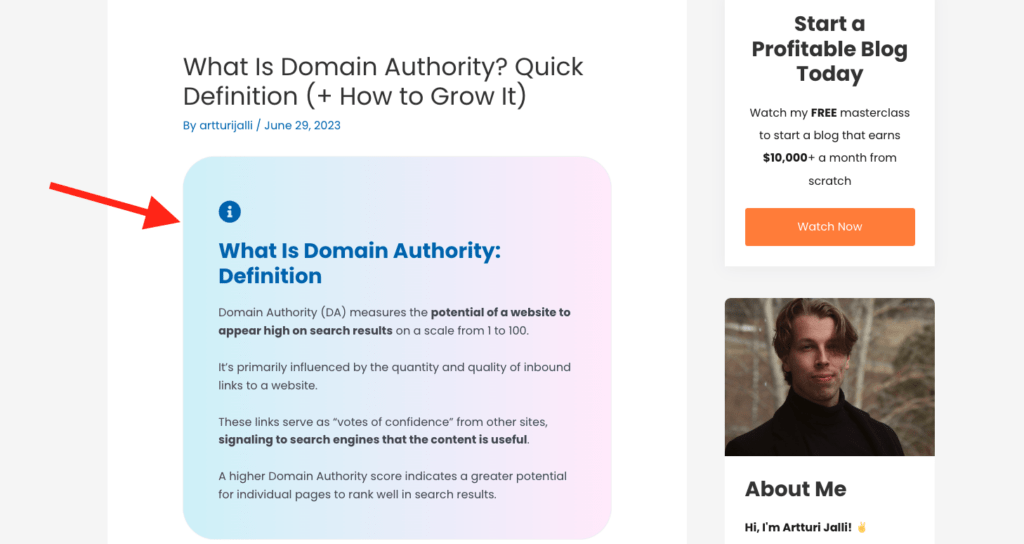
Then, follow the short brief with a super detailed blog post.
My longest blog post is 15,100 words in length. One could call this an e-book. But for me, it’s just another blog post.
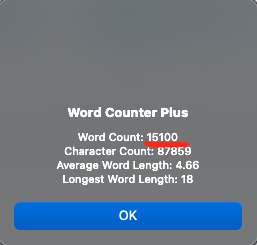
The reason why this post is so long is because this is what it takes to get this rank. There are lots of super long and detailed posts about that topic. Thus, there’s no other option but to make it super informative and long.
But don’t worry! Usually, your post doesn’t need to be this long. Many times my posts are 1,500-5,000 words in length.
It’s not about the word count. It’s all about beating your competitors with more informative and detailed content.
If there are lots of 500-1,000 word posts at the top of the search results, then 1,000-2,000 words might be what it takes to get there.
10. Use Images
People are attracted to visual content. No one wants to read a 2000-word-long wall of text.

Make sure you use images. Images that add value to the story.
There’s no specific images-per-word ratio. Instead, you should add images everywhere it supports delivering your message.
Look at this post you’re reading right now. It has a ton of images in almost every section.
Not because those images look nice. It’s purely because the images support what I’m trying to say.
If you don’t have images of yourself or that you have taken, your last resort is those stock libraries. There are great resources for free images, such as Unsplash.com.

Just remember that these aren’t unique and a lot of people use these.
That’s not a problem with your audience because they won’t be able to tell. But Google knows this. If you want to stand out, you need to “add to the internet”.
Thus, every image should be unique. But if you cannot find an image from your own photos, make sure to at least break your text down with generic images. But use those only if you have to.
11. Fall in Love with the Process
Blogging means writing about topics that might not be your favorites.
Thus, you also have to love the process, not just the topics. It takes hundreds of quality posts to stand out.
Even if it’s something you’re really passionate about, nobody wants to write 200 blog posts without liking the process.
That’s why I like to treat my blog like a business and an investment.
It takes time to succeed. But at the same time, everything pays off in the future. Also, it’s all for you—nobody takes a cut of what you earn from the site.
So it’s not a blog. It’s all business and strategies.
12. Inter-Link Your Articles
Interlinking your articles is important.
Not for the sake of building links, but because you want to keep your audience engaged.
Every post needs to provide maximum value to readers.
One easy way to do this is by leaving links to other resources where it makes sense.
If you’ve covered a related topic, what would be a better way to keep your visitors on your site than sharing them another insightful read from your pocket?
Here’s a screenshot of the interlinking profile of one of my blogs. Every post is connected.

This way you create a strong website with high topical authority. Every post makes the space better. And every post gives direction to another awesome post.
13. Back Up Facts
Link out to other sites to back up your facts. This way you build trust with your readers and Google.
If you back up the information you share, it makes your post look much more impressive.
This increases your chances of ranking higher on Google.
Linking in blog posts is easy. Just leave a link to a place that makes sense to you. I usually add a small section where I promote another relevant piece.
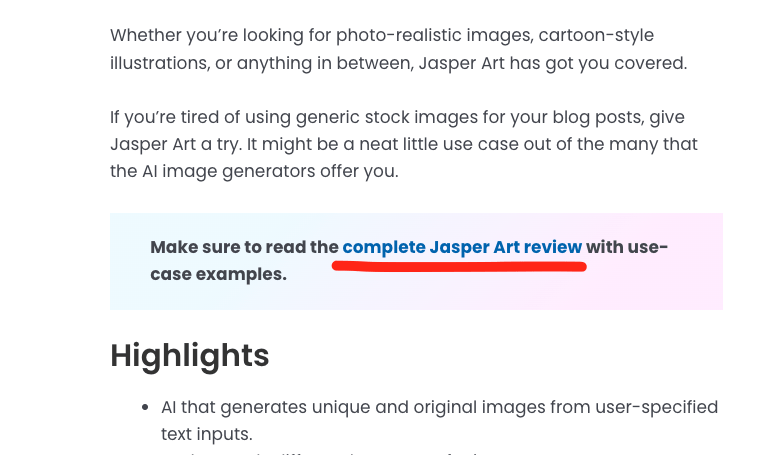
But more often, I just copy-paste a link to one of the words or phrases in my content.
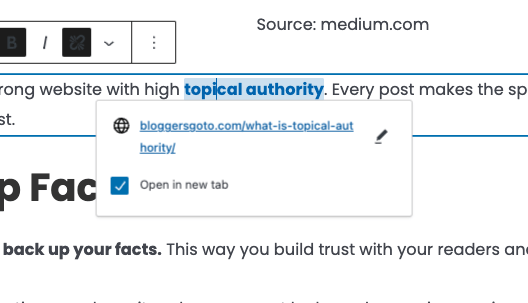
14. Do Not Try to Be Perfect
I always say you need to write the best post on the internet.
At first, this sounds scary. You need to write a post that’s perfect, for sure, right?
But that’s not the case.
In fact, most blog posts are complete fluff. Especially these days in the day and age of AI.

If you look at the search results, you will quickly find that most posts are put together in just an hour or two.
To outrank those, you need to spend some more.
If your competitor has 1,000 words and 5 images, write a post that’s 2,000 words and 10 images.
And just remember that it’s not about the word count but all about providing value. Don’t target a specific word count, image count, or link count. Write for humans, not for robots.
Don’t try to be perfect. I’ve written 1,000 posts in my life, yet none of those felt even close to perfect to me.
As a matter of fact, I think my competitors write 4/10 or 5/10 content, and mine is 5/10 or 6/10. But there’s a lot to improve. Even this paragraph right here could be written in so many better or clever ways.
Just make sure you’re better than your competitors. But never go for perfection. Perfection kills productivity and progress.
15. Be Realistic with Your Goals
Do not expect results overnight.
It takes a long time before you see your articles rank on Google. For new sites, it takes months or even up to a year.
Be patient and realistic!
On my first blog, it took 2 months before Google started picking up my articles. During that time, I wrote 8 hours a day without seeing any results.
16. Don’t Worry About the Design
Don’t spend money on anything except for the domain + hosting.
No one is going to visit your website for a long time.
It does not make any difference whether you have a strong brand or not when you are just getting started.
The blog posts are going to drive traffic to your site. Focus on the quality of those.
When you have a solid number of monthly visits, perhaps you can monetize your blog. And when you have monetized your blog, maybe you can hire a designer to revamp your outlook.
But don’t spend time on anything else except for writing and providing value.
17. Produce Evergreen Content
Write content that does not get old. People will link to that content even after years, which will bring you more and more visits over time.
However, not all content needs to be evergreen. It is good to write trendy short-lived content too. I suggest you write 5–10 comprehensive, long-form, and evergreen articles to begin with.
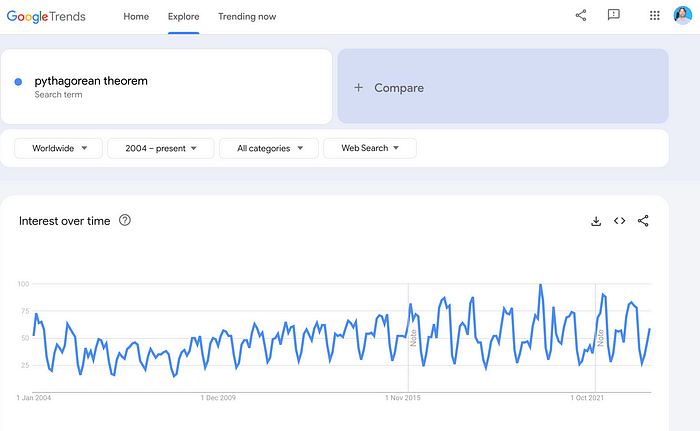
18. Narrow-Down Your Niche
Do not pick a too broad niche.
A bad example of a niche for a beginner blogger is: “Fitness”
A good example of a niche is: “Gym training 3,000ft+ above sea level”
If you pick a too-broad niche, you are going to be bashed by big companies and agencies that have hundreds of people competing against you.
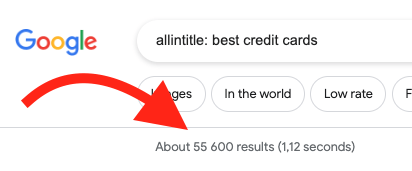
However, if you narrow down your niche enough, you might be one of the first ones to write a truly good post about that topic.
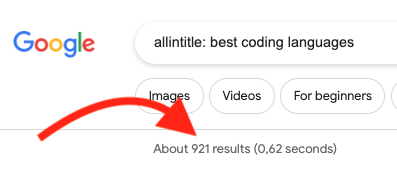
This increases your chances to succeed as a blogger. When you have established authority on a narrow niche, then you can slowly broaden it up.
Read my post about the allintitle: operator you see above.
19. Use a Simple URL Structure
The URL of a blog post affects rankings. It’s definitely not one of the biggest factors, but it’s still there.
Although the impact is not huge, it is really easy to do right from the get-go.
By default, most blogs, such as WordPress blogs use a URL structure that looks like this:
site.com/blog/2021/03/12/blogging-tips
Usually, the /blog and /yyyy/mm/dd are redundant.
Instead, you should use a URL structure like this:
site.com/blogging-tips
You can change this in your website builder quite easily. Just remember that this breaks all the existing links to your site!
Do not make this change unless you have no articles, or if your articles are not linked by anyone.
For example, in WordPress, you can change the URL structure by going to Dashboard > Settings > Permalinks, and selecting “Post name” option.
20. Check Your Traffic
Make sure you set up Google Analytics and Google Search Console for your blog.
These tools provide you with valuable statistics about your blog.

You can for example see:
- The number of visitors over time.
- The keywords your site ranks for.
- The demographics.
And so much more.
I don’t recommend wasting too much time on the traffic. But just check it from time to time.
All you should worry about is that the traffic is going up or at least not coming down.
21. Use Call-to-Actions (CTAs)
A call to action is what the name suggests. You ask a user to perform a specific action on your web page.
This could mean:
- Downloading a file.
- Joining a newsletter.
- Following you on social media.
- Reading related blog posts.
- Purchasing something.
With a successful CTA, a visitor either stays longer on your website or even converts to a customer/subscriber.
Needless to say, this is important when building an online business like a blog.
Make sure to include a CTA somewhere in your blog post.

22. Try Medium.com
Are you overwhelmed by all the hassle of building your own blogging website?
If you are not ready to commit to maintaining your own website, use a blogging platform.
Medium.com, the very platform you are on right now, is the best choice to start your own blog.
Medium is one of the most popular blogging platforms today.
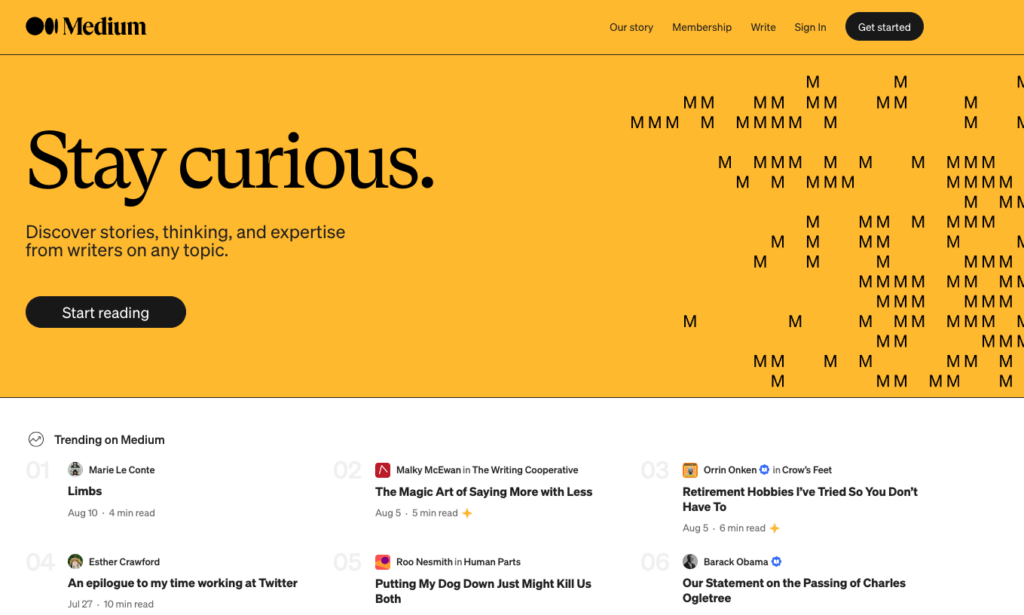
Medium has an audience of hundreds of millions. This means you do not need to build the audience yourself.
As an example, one of my stories got 40k views when I only had 85 followers!
To get started on Medium:
- Sign up
- Become a member
- Read this comprehensive guide
- Start writing
This can be a great place to get started as a blogger. Write some posts to see if you like it and if you really want to do it.
Then once you get some visitors to your blog, you can start considering your own blog.
23. Use Grammarly
You cannot avoid grammar mistakes.
When you are getting started, you want to spend as little time as possible with annoying issues. Grammar mistakes are one of them.
However, these days there are free grammar tools like Grammarly.
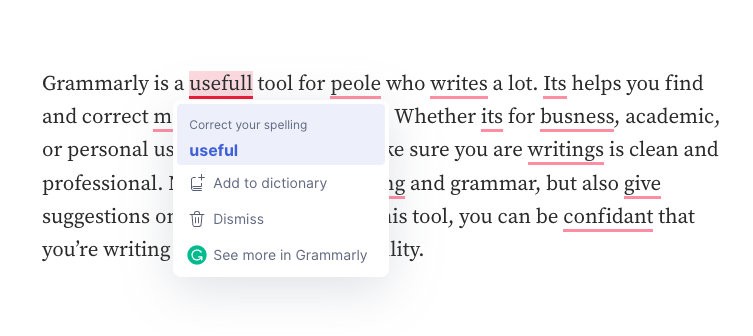
Grammarly constantly analyzes your writing and makes it easy for you to fix the issues.
Using the free version of Grammarly is more than enough. I’ve never paid for the tool!
Anyways, this allows you to focus on writing the content while the Grammar analyzer takes care of the silly mistakes.
This leaves more time for you to focus on your content and worry less about those silly punctuation rules.
24. Watch Your Competitors
The best way to learn to blog is by seeing what others do.
Watch the key players in your niche.
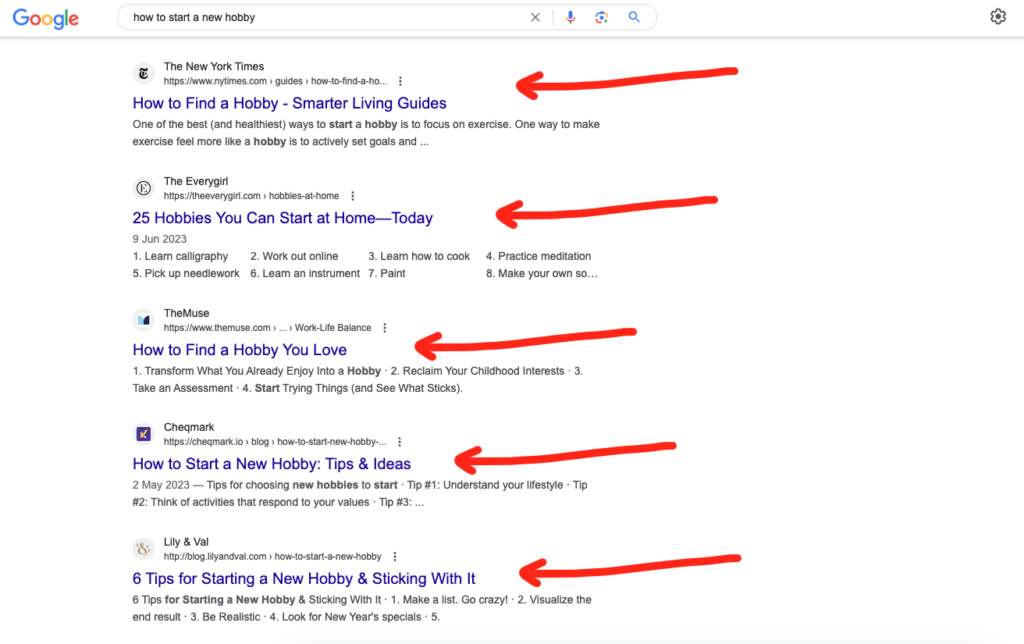
What do they do? What kind of content do they produce?
By watching your best competitors you can get a good hunch on what you should do to succeed.
The best way to succeed in blogging is by first seeing what others are doing.
I still get heavily inspired by my competitor’s content strategies.
Use this strategy already when picking a niche. Google articles related to your niche, and analyze them before you make a decision.
Thanks for reading!
